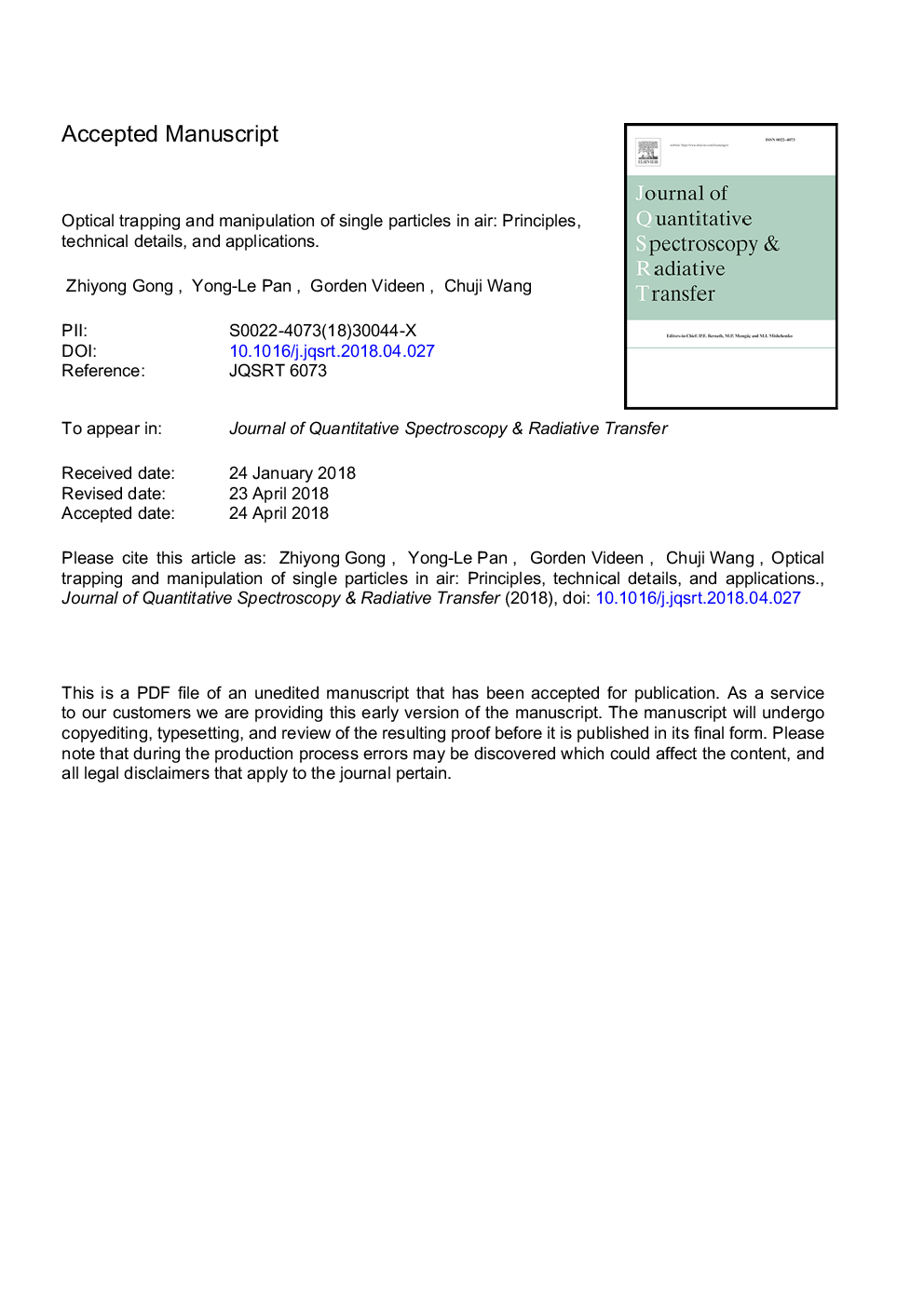| کد مقاله | کد نشریه | سال انتشار | مقاله انگلیسی | نسخه تمام متن |
|---|---|---|---|---|
| 7845947 | 1508601 | 2018 | 51 صفحه PDF | دانلود رایگان |
عنوان انگلیسی مقاله ISI
Optical trapping and manipulation of single particles in air: Principles, technical details, and applications
ترجمه فارسی عنوان
تله نوری و دستکاری ذرات تک در هوا: اصول، جزئیات فنی، و برنامه های کاربردی
دانلود مقاله + سفارش ترجمه
دانلود مقاله ISI انگلیسی
رایگان برای ایرانیان
کلمات کلیدی
تله نوری و دستکاری، ذرات تک نیروهای نوری، تله فتوفوریتی، پراکندگی نور، طیف سنجی رگبار حفره، طیف سنجی رامان،
موضوعات مرتبط
مهندسی و علوم پایه
شیمی
طیف سنجی
چکیده انگلیسی
Trapping a single aerosol particle allows detailed investigation of its fundamental properties over extended time periods without external interferences. Optical trapping has developed into a powerful tool to perform such single-particle studies. However, trapping and manipulating a single particle in air, especially an irregularly shaped, absorbing particle, is much more challenging than that of a particle in a liquid solution. Even though the underlying mechanisms are not fully understood, recent experimental developments advanced the technique for trapping single particles in air, making it possible to manipulate and characterize a wide range of single particles. In this paper, we review recently demonstrated optical configurations for trapping and manipulating single airborne particles. Based on different trapping principles, we tentatively categorize them into radiation-pressure traps, photophoretic traps, and universal optical traps (UOTs). Radiation-pressure traps are based on the radiation pressure force resulting from photon momentum transfer; they include the early optical levitation configurations and the well-known optical tweezers. Photophoretic traps are based on the complex photophoretic forces that occur in absorbing particles; they are classified by the optical arrangements and include single-beam, dual-beam, and confocal-beam traps. UOTs can trap a variety of different types of particles, including transparent or absorbing, spherical or irregularly shaped, and liquid or solid particles. In order to evaluate each optical trapping scheme, four key aspects, i.e., simplicity, robustness, flexibility, and efficiency, of an optical trapping configuration are discussed. In addition to the stable optical trapping, optical manipulations from one dimension to three dimensions allow studying various single particles with great flexibility. With the single particle stably trapped and flexibly manipulated in air, other analytical techniques can be used to characterize these particles. Recent updates on optical methods for characterizing and monitoring single particles in air are discussed, such as light scattering, Raman spectroscopy, and cavity ringdown spectroscopy (CRDS).
ناشر
Database: Elsevier - ScienceDirect (ساینس دایرکت)
Journal: Journal of Quantitative Spectroscopy and Radiative Transfer - Volume 214, July 2018, Pages 94-119
Journal: Journal of Quantitative Spectroscopy and Radiative Transfer - Volume 214, July 2018, Pages 94-119
نویسندگان
Zhiyong Gong, Yong-Le Pan, Gorden Videen, Chuji Wang,
